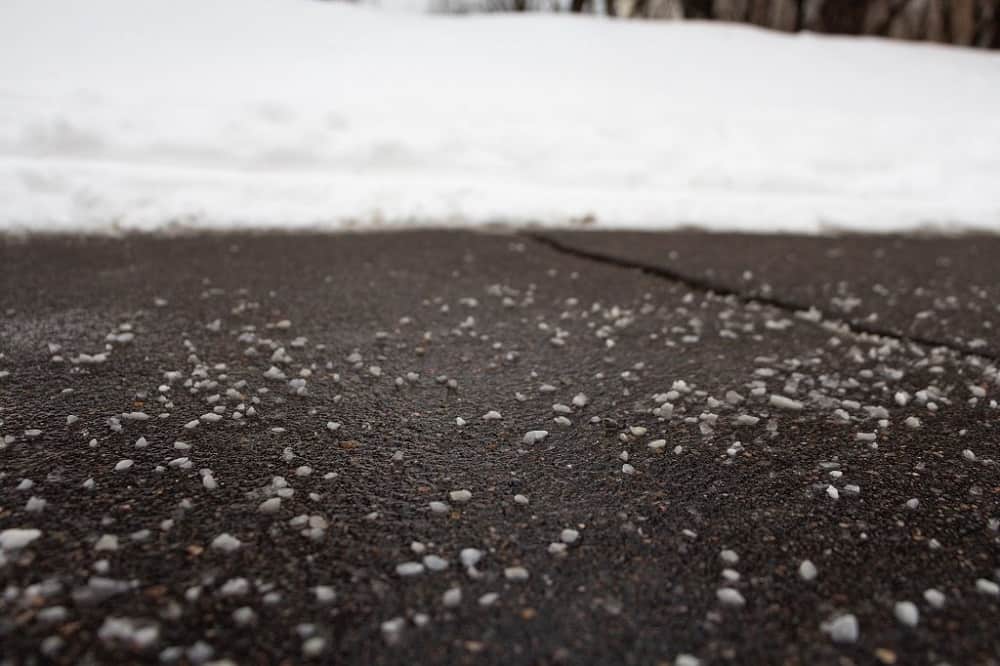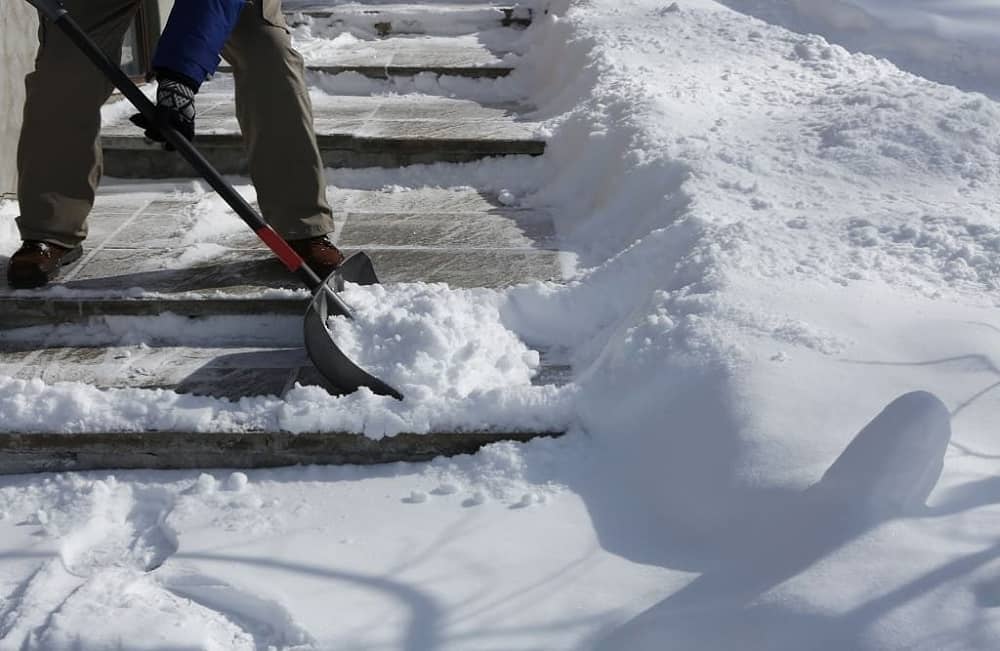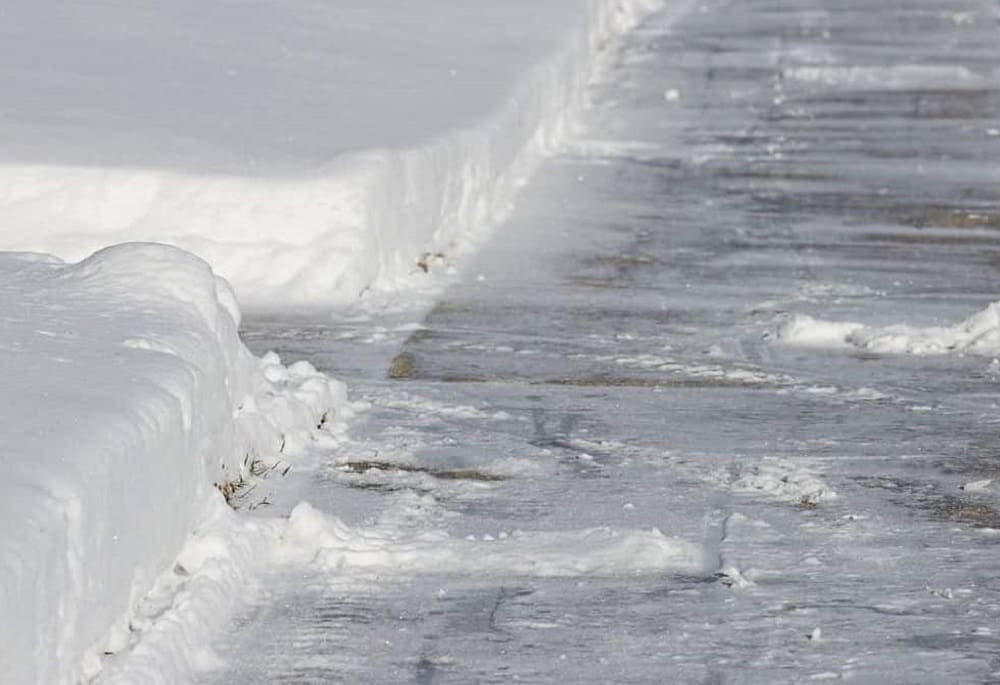Salting sidewalks during the winter months is essential for every business. Not only does the law require businesses to take steps to ensure that everyone can safely access their premises, but failing to protect customers hurts your brand and reduces foot traffic.
There are many precautions you can take to ensure your sidewalks and entryways are safe for everybody to use, from hiring experts from Earth Development to manage salting and snow removal for you to taking the initiative and treating your pavements yourself.
At Earth Development, we provide both expert help and expert advice! As a professional snow removal company, here are our top six tips for safely and effectively salting your sidewalk this winter.
1. Spot Treating

2. Consider the Temperature
When it comes to salting sidewalks in winter, it’s important to consider the temperature. Typically, salt is most effective when the temperature is above 15°F. It works by lowering the freezing point of water, creating a brine that melts ice and prevents it from forming. However, as the temperatures drop significantly, salt becomes less effective. For colder temperatures, we recommend using calcium chloride, which works at lower temperatures and helps maintain safe and ice-free sidewalks.
3. Reapply Before a Blizzard
When a heavy snow blizzard is forecasted, it’s crucial to pretreat your sidewalks with salt. Apply a layer of rock salt several hours before the storm arrives so it has time to permeate the ground. The salt will help prevent the initial snowfall from bonding and put you on a good footing to stop more ice from forming.
You’ll notice that this makes scraping and shoveling easier after blizzard conditions subside. Reapplying a fresh layer of salt as the blizzard winds down will combat any ice buildup from the heavy snow. Preparation with salt helps maintain safety on sidewalks ahead of and during extreme winter storms.
4. Remove Accumulated Snow

Let’s face it; salt can only do so much. If you’re dealing with a large quantity of snow on your property, you can help ensure ice works as well as possible by shoveling excess snow from your pavement and entryways.
Remove the snow and you’ll reduce the chance of it compacting and forming new ice, and increase the melting efficiency of the salt.
5. Use Thin, Even Layers
The best way to use salt is to apply thin and even layers. Spot treating is good for general maintenance and dealing with problem areas, but your pavements and entryways should be covered in an even and thin layer of ice.
By applying the salt evenly, you maximize the surface area of the snow and ice that it can reach, speeding up melting times.
6. Avoid Too Much Salt on Sidewalks
When salting sidewalks, resist the temptation to overdo it with excess salt. As a general rule of thumb, one pound of rock salt or calcium chloride can treat approximately 1,000 square feet of pavement. Excess rock salt can damage concrete surfaces, leach into the soil, and pollute groundwater over time. Stick to the recommended amount, focusing on slippery surfaces first. Then monitor conditions and reapply lightly and evenly as needed. Too much salt provides no added benefit and creates unnecessary risks for the environment.
7. Regularly Inspect Hazardous Areas

Some parts of your pavements, sidewalks, or entryways may be more hazardous than others. This may be the result of cracks in the stone or an uneven surface that causes a build-up of water and ice.
Make sure to regularly inspect the areas that you know to be dangerous and use spot treating to ensure they don’t pose too much of a hazard. Remove all accumulated snow with a shovel or snow blower from these areas, also, to maximize the impact that the salt can have.
8. Choose the Right Road Salt
When it comes to salting sidewalks, choosing the right type of salt is crucial for effective ice and snow removal. One commonly used salt is sodium chloride, which works well in temperatures above 15°F and is cost-effective. It’s most effective when applied before snowfall when it has the opportunity to establish a brine and prevent ice formation.
Another option is magnesium chloride, which works in colder temperatures, even below freezing, and can quickly melt ice. It’s often used as a liquid spray for faster results. Whether you’re using sodium chloride or magnesium chloride, it’s important to sprinkle salt evenly on the surface, focusing on high-traffic areas and problem spots. Remember, using the right type of salt and applying it correctly will help keep sidewalks safe and ice-free during winter.
9. Control of Areas Where Sun and Shade Alternate

Parts of your property that see lots of sunlight early in the day, but get covered by shadow later on, should be monitored closely. Direct sunlight can easily melt snow, meaning puddles of water you see in the morning may become ice patches later in the day. Don’t assume that a puddle will always stay a puddle!
Use spot treatment and keep ice handy to ensure that these puddles don’t become dangerous as the day goes on.
Local Snow Removal Experts Take It Off Your Hands
The above tips are great for any business that wants to protect its customers, clients, and employees. Help from local snow removal experts, however, can build on this and make the entire experience hassle-free.
Earth Development connects you with reliable, experienced local contractors who stay on top of all your snow and ice removal needs. Our team will draw up a custom plan to keep your business operating safely throughout the winter, and will even attend your property before, during, and after a winter event.
If you’re looking for reliable ice maintenance from experts who know what’s required of you by law, and who have the equipment to do the job right, then look no further than Earth Development! Give the team a call today and we’ll get you ready for the heavy snowfall that’s around the corner this winter.
